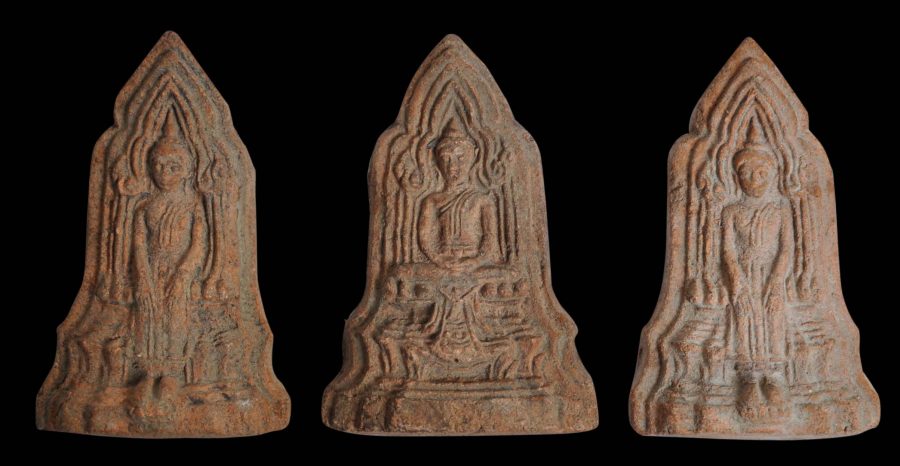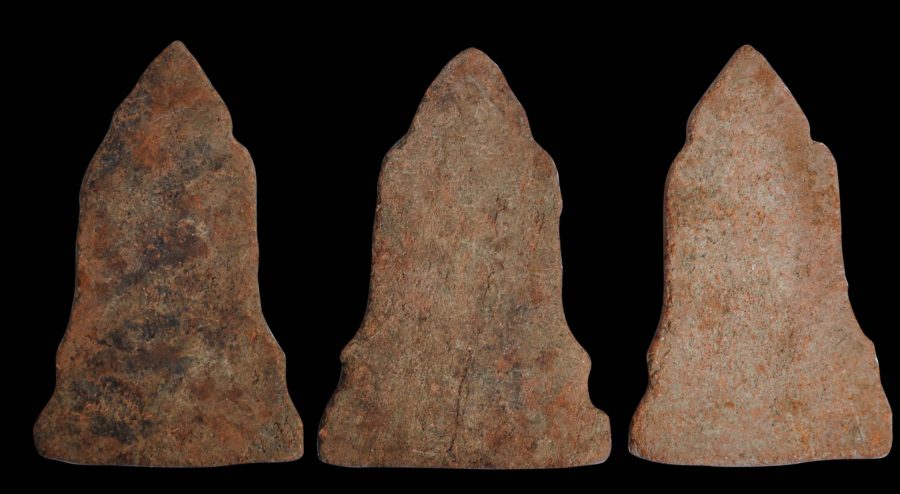Enquiry about object: 4689
Three Thai Terracotta Votive Plaques
Ayutthaya, Thailand 16th-18th century
heights: 8.5cm, widths: 5.4cm-5.7cm
Provenance
private collection, London.
These three small but votive tablets or plaques are of fired clay. Dating is difficult but somewhere in the 16th-18th centuries is likely.
Each was made by pressing clay into a metal reverse-mould after which it was fired. Each shows the Buddha seated in bhumispharamudra on a high, tiered throne and beneath an ornate trefoil arch which tends to frame the Buddha. Two are essentially identical and undoubtedly are form the same mould. The third is quite different.
Such tablets were acquired by Buddhist devotees and left in sacred cave retreats and at shrines as acts of merit, or they were acquired at religious sites as a momento. Within Buddhist Southeast Asia, the practice was most prevalent in Thailand and Burma. The tablets often were made in one location and the carried by pilgrims to be left at a site in another location. This tablet was acquired in the UK (where Burmese antiques tend to be more prevalent than Thai antiques; the British colonised Burma but not Thailand) and it is possible that this Thai-made tablet was carried by a pilgrim to a religious site in Burma.
The three are in fine condition.
References
Green, A., & T.R. Blurton (eds.), Burma: Art and Archaeology, The British Museum Press, 2002.
Green, A., (ed.), Eclectic Collecting: Art from Burma in the Denison Museum, NUS Press, 2008.
Krairiksh, P., The Roots of Thai Art, River Books, 2012.
Lowry, J., Burmese Art, Victoria and Albert Museum, 1974.
Siamese Art of the 14th-19th Centuries in the Hermitage, Slavia Art Books, 1997.



